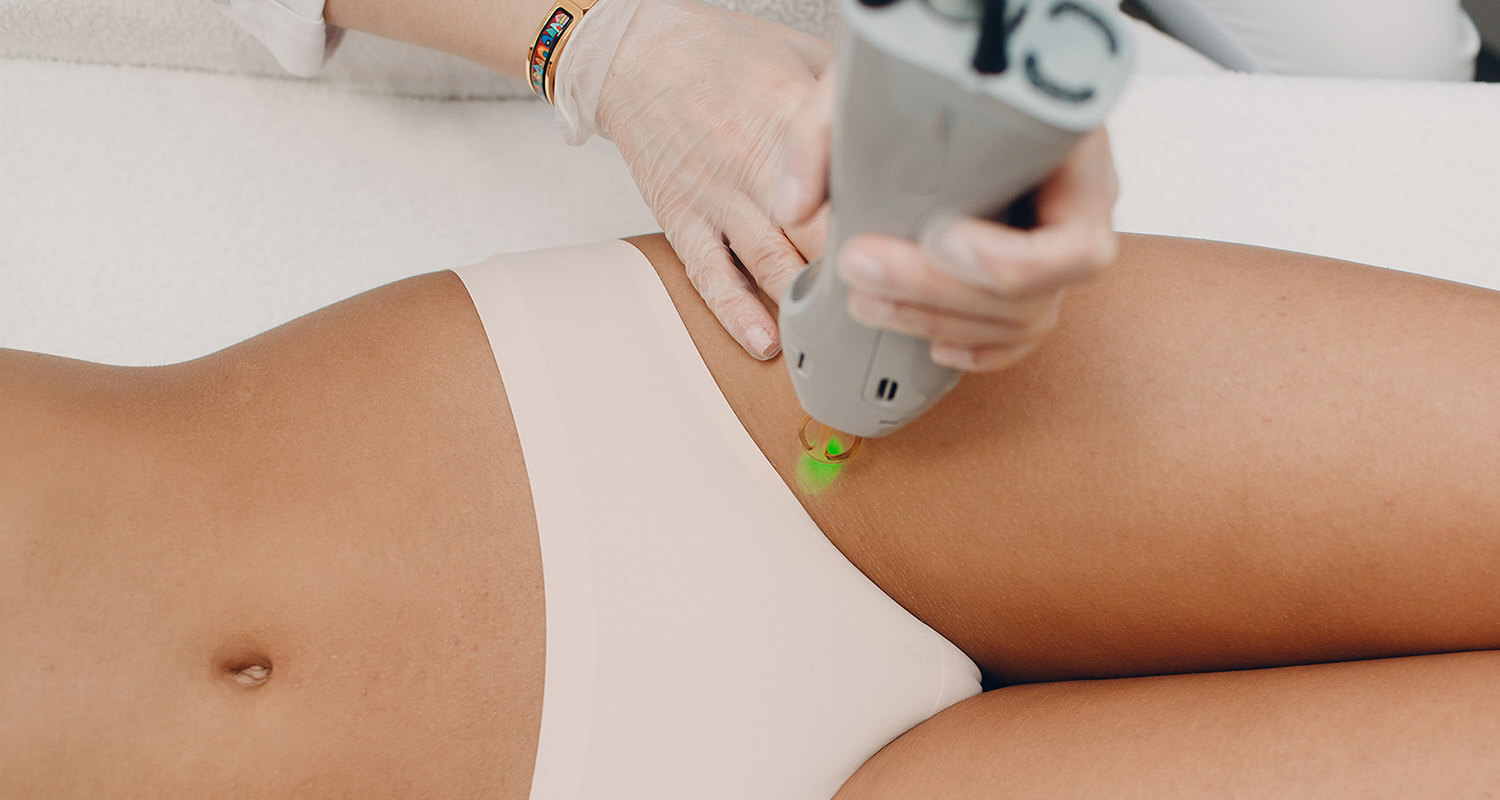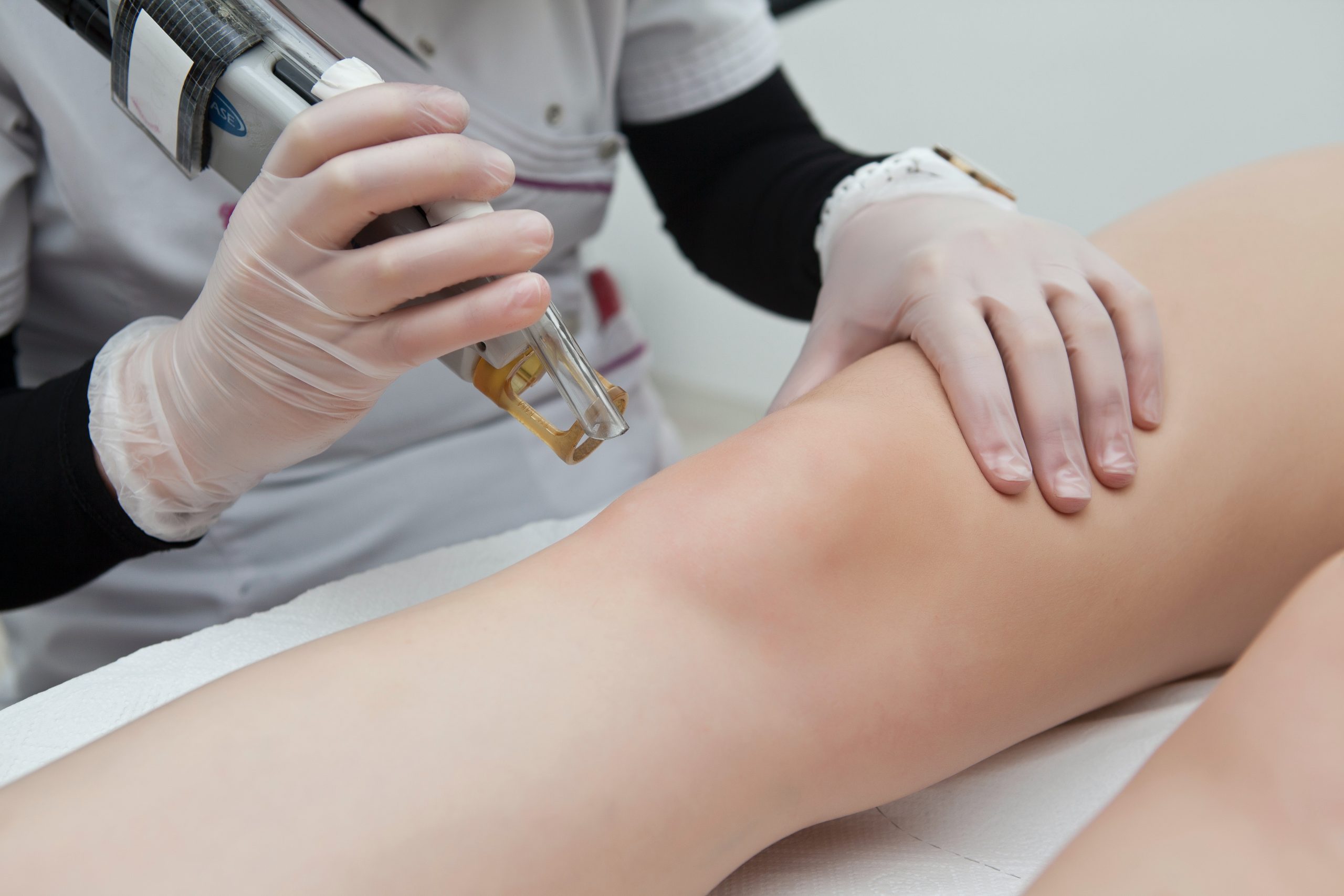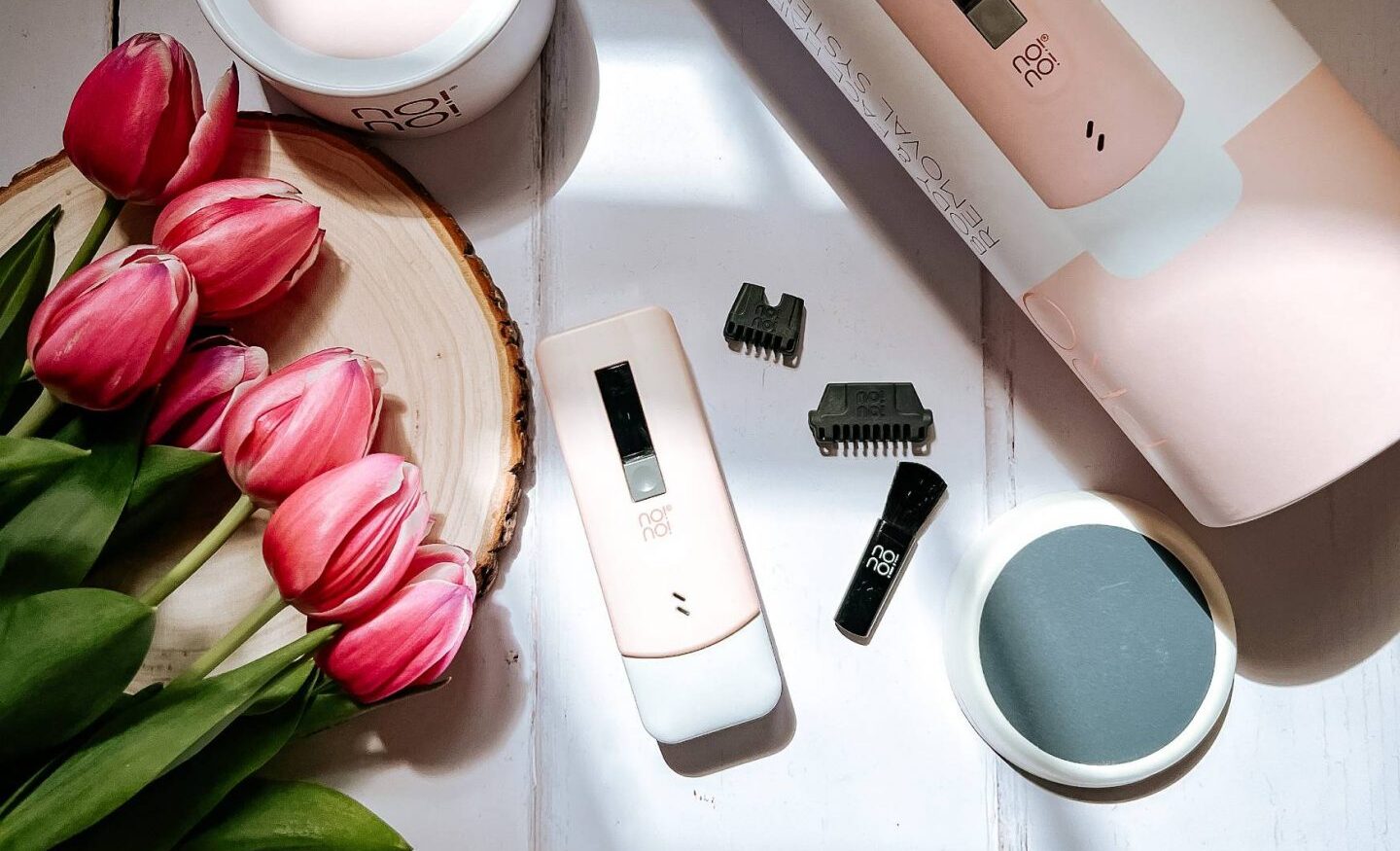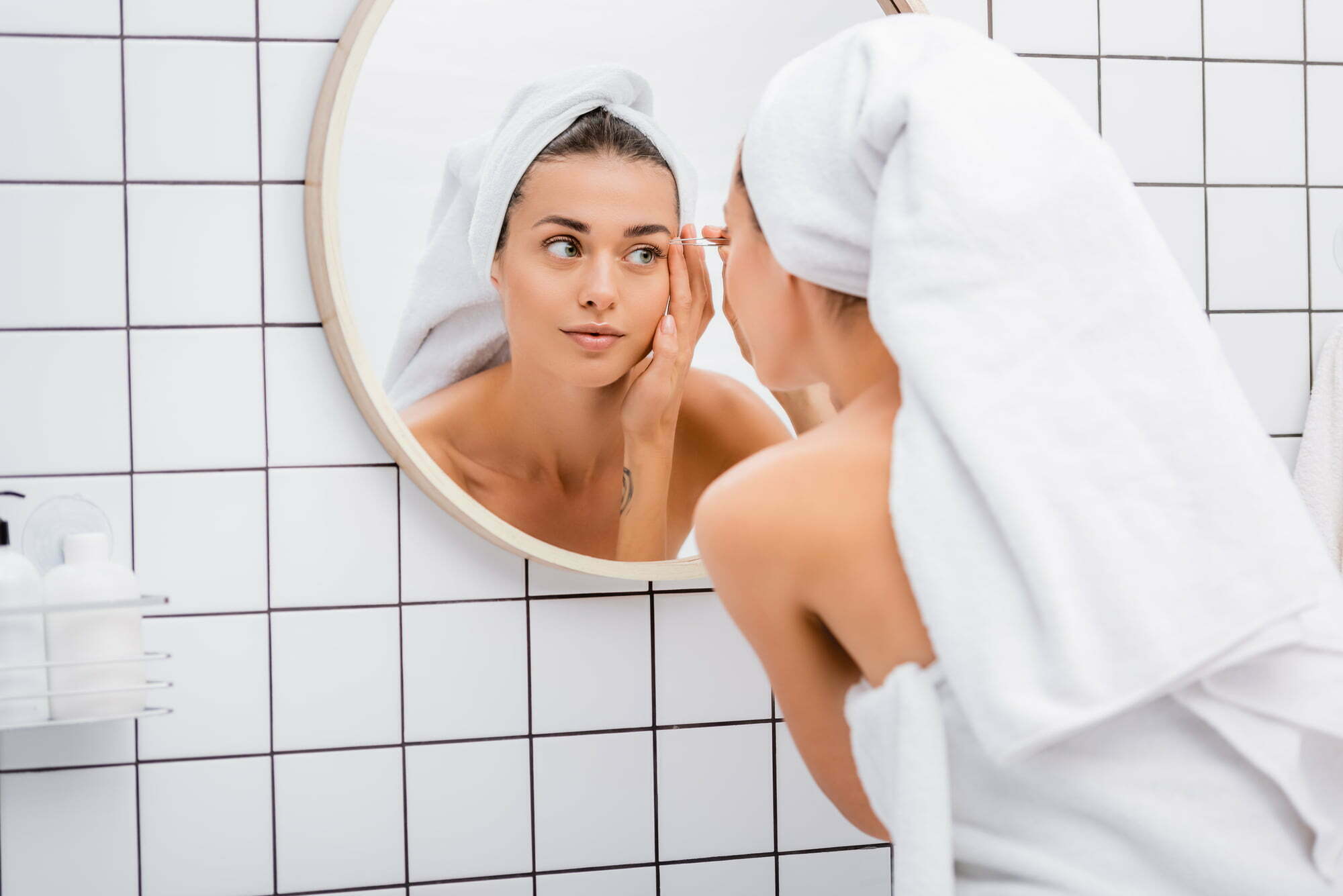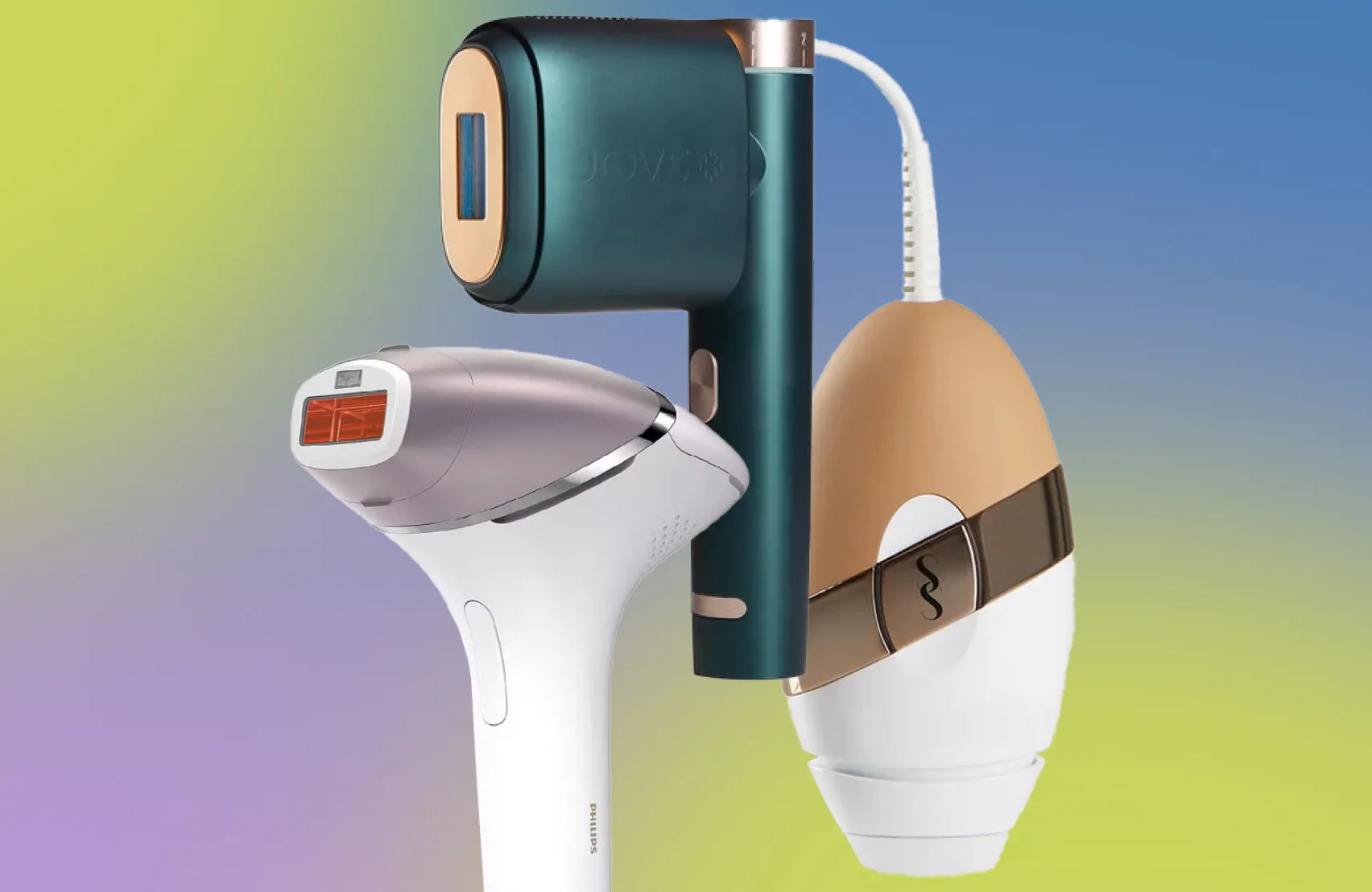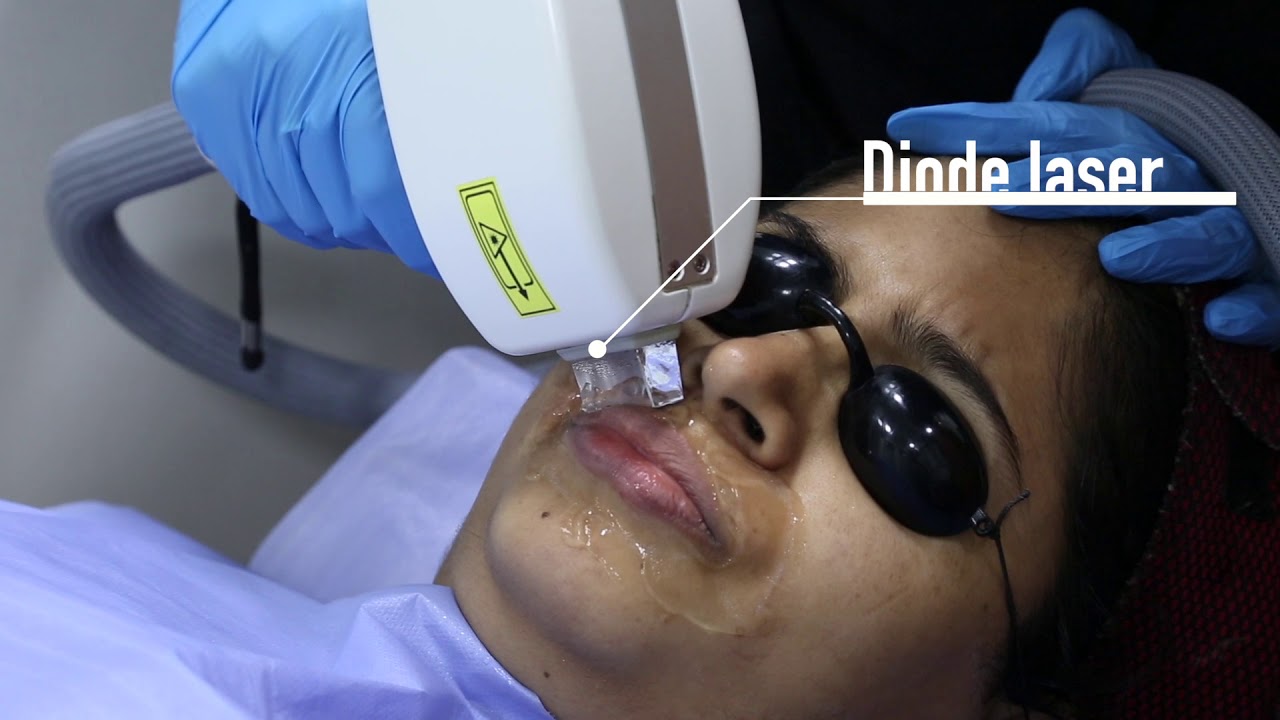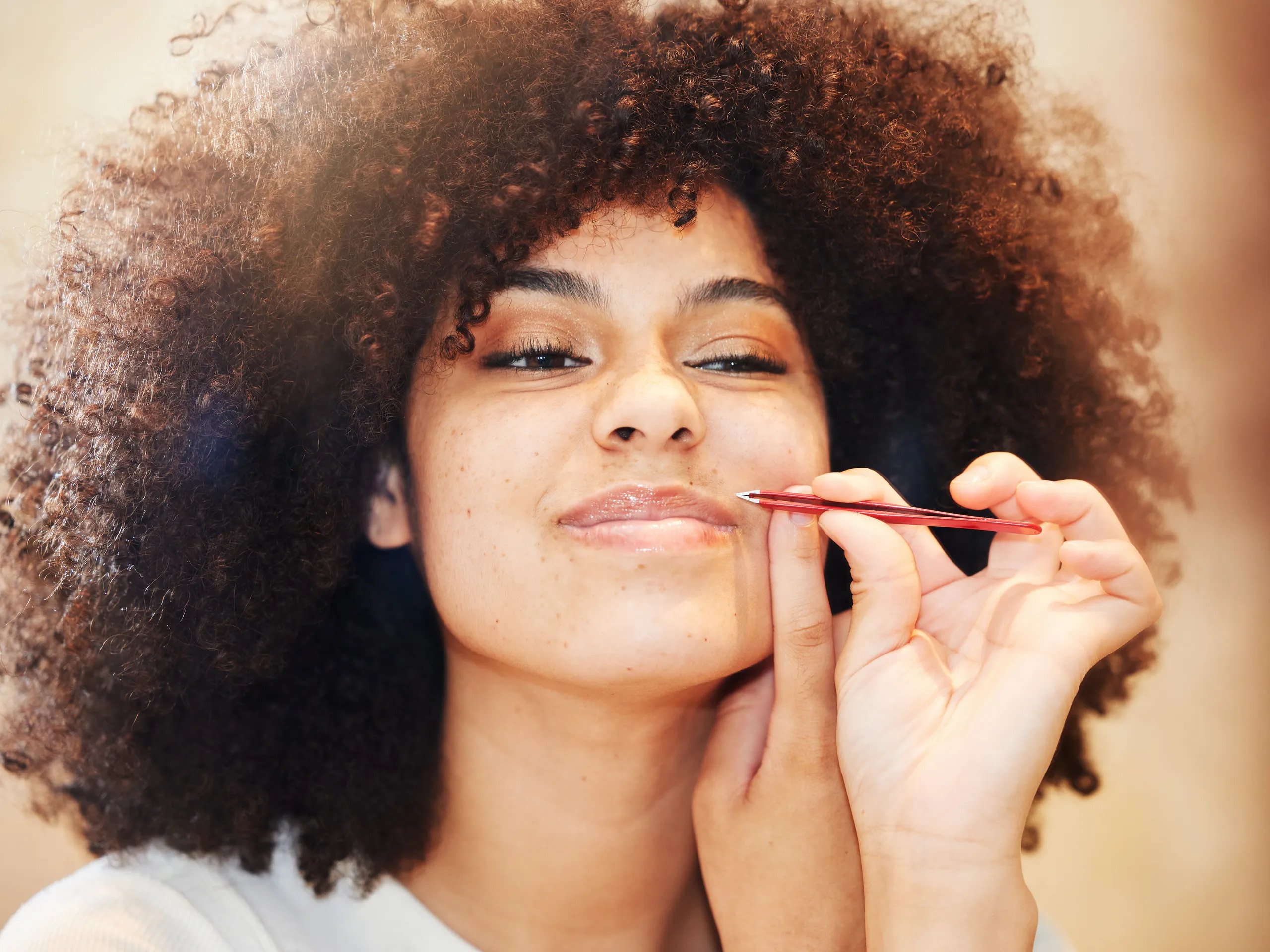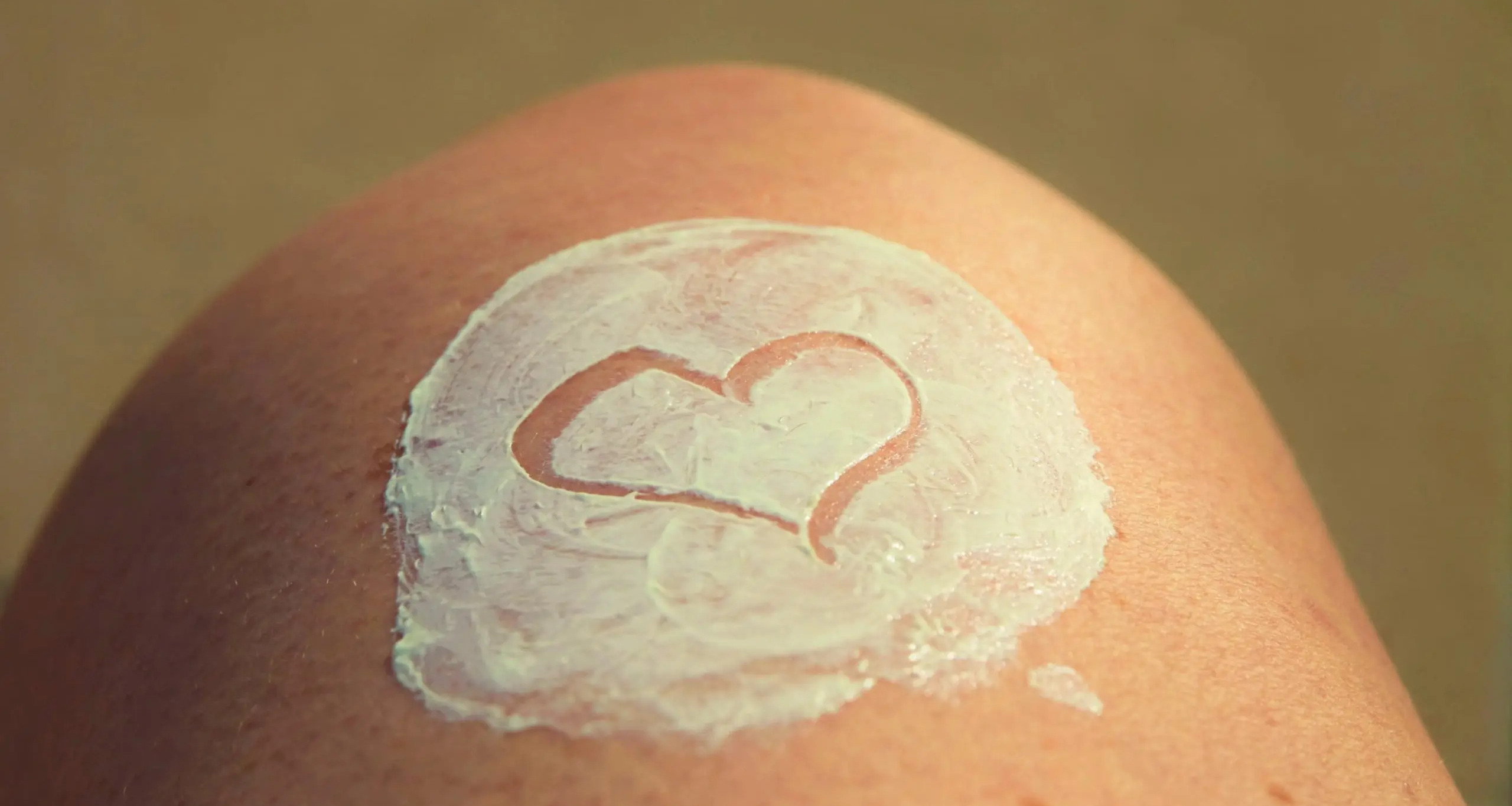

FAQs
What To Use After Laser Hair Removal
Modified: August 5, 2023
Discover the best solutions to use after laser hair removal. Get answers to common questions about post-treatment care and find out how to maximize results.
(Many of the links in this article redirect to a specific reviewed product. Your purchase of these products through affiliate links helps to generate commission for Under-tec.com, at no extra cost. Learn more)
Table of Contents
- Introduction
- Understanding Laser Hair Removal
- What to Expect After Laser Hair Removal
- Post-Treatment Care Instructions
- Recommended Products for Post-Laser Hair Removal Care
- Moisturizers and Serums
- Sunscreen and Sun Protection
- Gentle Cleansers and Exfoliants
- Tips for Soothing and Healing the Skin
- Avoiding Irritation and Ingrown Hairs
- Conclusion
Introduction
Laser hair removal has become an increasingly popular choice for individuals looking for a long-term solution to unwanted hair. This non-invasive procedure uses concentrated beams of light to target and destroy hair follicles, resulting in reduced hair growth over time. While the procedure itself is relatively quick and painless, it’s important to understand what to expect after laser hair removal and how to properly care for your skin.
After your laser hair removal session, your skin may be slightly red and sensitive. You may also notice some swelling or a mild sunburn-like sensation. These side effects are normal and typically subside within a few hours to a few days. It’s important to avoid irritating or exposing the treated area to direct sunlight immediately after the treatment to ensure optimal healing and results.
This article will provide you with helpful tips and recommendations for post-laser hair removal care. From moisturizers and sunscreens to gentle cleansers and tips for soothing the skin, we’ll guide you through the best practices to ensure your skin stays healthy and smooth after your laser hair removal sessions.
Understanding Laser Hair Removal
Laser hair removal is a cosmetic procedure that uses laser technology to remove unwanted hair from various parts of the body. The laser emits a concentrated beam of light that is absorbed by the pigment in the hair follicles. This light energy is converted into heat, damaging the follicles and inhibiting future hair growth.
During the procedure, a handheld device is used to target the specific area being treated. The technician will adjust the laser settings according to your skin type and hair color to ensure maximum effectiveness and safety. Multiple sessions are usually required to achieve the desired results, as hair growth occurs in cycles and not all follicles are active at the same time.
One of the key advantages of laser hair removal is its long-term results. Unlike temporary methods like shaving or waxing, laser hair removal offers a more permanent solution to unwanted hair. Over time, as the follicles are damaged, hair growth becomes thinner and lighter, and in some cases, hair may not regrow at all.
It’s important to note that laser hair removal is most effective on individuals with fair skin and dark hair, as the laser targets the pigment in the hair follicles. However, advancements in technology have made it possible to treat a wider range of skin tones and hair colors with satisfactory results.
Prior to undergoing laser hair removal, it’s crucial to consult with a qualified and experienced professional who will assess your skin type and hair color, explain the procedure in detail, and address any concerns you may have. Understanding the process and having realistic expectations will help you achieve the best possible outcomes.
What to Expect After Laser Hair Removal
After your laser hair removal treatment, it’s important to know what to expect in terms of post-treatment effects and how to care for your skin. While the specifics can vary from person to person, here are some common experiences and tips to help you navigate the post-treatment period.
1. Redness and Sensitivity: It’s normal to experience mild redness and sensitivity in the treated area immediately after the session. This is a result of the heat generated by the laser. The redness should subside within a few hours, but it may last up to a couple of days for some individuals.
2. Swelling: In some cases, you may notice slight swelling in the treated area. This is a temporary reaction and should diminish within a day or two. Applying a cold compress or an ice pack wrapped in a clean cloth can help reduce swelling.
3. Sunburn-like Sensation: Your skin may feel like it has a mild sunburn after laser hair removal. This sensation is normal and should fade within a day or two. Avoid using any harsh skincare products or exposing the treated area to direct sunlight until the sensitivity subsides.
4. Hair Shedding: Over the next few days or weeks, you may notice that some of the treated hair begins to shed. This is a positive sign that the laser has effectively damaged the follicles. It’s important to refrain from plucking or waxing the hair; instead, allow it to naturally fall out on its own.
5. Patchy Hair Growth: As new hair cycles through, you may experience patchy hair growth in the treated area. This is normal and should even out over time with subsequent laser hair removal sessions.
While these are common post-treatment experiences, it’s essential to remember that everyone’s skin reacts differently. If you have any concerns or unusual reactions, it’s best to consult with your laser hair removal technician or dermatologist for guidance and reassurance.
Post-Treatment Care Instructions
Proper post-treatment care is essential for optimizing the results of your laser hair removal and ensuring the health and well-being of your skin. Here are some important care instructions to follow:
1. Avoid Sun Exposure: Direct sunlight can irritate the treated area and increase the risk of complications. For at least two weeks after your laser hair removal session, avoid sun exposure as much as possible. If you need to go outdoors, apply a broad-spectrum sunscreen with an SPF of 30 or higher and wear protective clothing.
2. Skip Hot Showers and Baths: Hot water can cause further skin irritation, so it’s best to avoid hot showers or baths immediately following your treatment. Stick to lukewarm or cool water instead.
3. Gentle Cleansing: Use a mild, non-irritating cleanser to wash the treated area. Avoid using harsh soaps or exfoliants, as they can be too abrasive for the sensitive skin post-laser hair removal. Pat the area dry with a clean towel, avoiding any rubbing or friction.
4. Moisturize Regularly: Keep the treated area well-hydrated by applying a gentle moisturizer. Look for products that are fragrance-free and specifically formulated for sensitive skin. This will help soothe any redness or irritation and promote faster healing.
5. Avoid Irritants: Stay away from products that may irritate your skin, such as perfumes, alcohol-based toners, and heavily scented lotions. These can disrupt the healing process and increase the risk of complications.
6. Avoid Excessive Heat: Refrain from activities that generate excessive heat, such as intense exercise or using saunas and hot tubs, as they can worsen redness and prolong the healing process.
7. No Hair Removal Methods: During the healing process, avoid plucking, waxing, or using depilatory creams on the treated area. These hair removal methods can disrupt the hair growth cycle and interfere with the effectiveness of laser treatment.
It’s essential to follow these instructions diligently to protect your skin and ensure the best possible results. If you have any questions or concerns about post-treatment care, don’t hesitate to reach out to your laser hair removal technician or dermatologist for guidance.
Recommended Products for Post-Laser Hair Removal Care
After undergoing laser hair removal, selecting the right skincare products can make a significant difference in the healing process and overall results. Here are some recommended products to incorporate into your post-treatment care routine:
1. Moisturizers and Serums: Look for gentle, hydrating moisturizers and serums that are specifically formulated for sensitive skin. Ingredients like aloe vera, chamomile, and hyaluronic acid can help soothe and moisturize the treated area. Apply these products generously to keep your skin hydrated and promote healing.
2. Sunscreen and Sun Protection: Sun protection is crucial after laser hair removal. Choose a broad-spectrum sunscreen with an SPF of 30 or higher and apply it generously to the treated area, especially if you’re going outside. Opt for physical sunscreens that contain zinc oxide or titanium dioxide, as they provide a protective barrier against both UVA and UVB rays.
3. Gentle Cleansers and Exfoliants: Use mild, non-irritating cleansers to keep the treated area clean without causing any further irritation. Avoid using harsh exfoliants or scrubs until your skin has fully healed. However, once your skin has recovered, incorporating a gentle exfoliant into your skincare routine can help prevent ingrown hairs and keep your skin smooth.
4. Topical Anti-Inflammatory Creams: If you experience redness or inflammation after laser hair removal, a topical anti-inflammatory cream can help soothe the area. Look for products that contain ingredients like calendula, green tea extract, or witch hazel.
5. Cooling Gels or Aloe Vera: After your laser hair removal session, you may experience some temporary discomfort or heat in the treated area. Applying a cooling gel or pure aloe vera gel can provide instant relief. Choose products that are free of fragrances and harmful additives.
6. Avoiding Irritation and Ingrown Hairs: To minimize the risk of irritation and ingrown hairs, consider applying a post-hair removal spray or serum that contains ingredients like salicylic acid or tea tree oil. These ingredients help exfoliate the skin and prevent the hair follicles from becoming clogged.
Remember, everyone’s skin is unique, so it’s essential to choose products that work well for you. If you have any specific concerns or allergies, consult with your dermatologist or laser hair removal technician to identify the best products for your skin type and post-treatment needs.
Moisturizers and Serums
Moisturizers and serums play a critical role in post-laser hair removal care. They help soothe the treated area, maintain hydration, and promote healing. Here are some recommended moisturizers and serums to consider incorporating into your skincare routine:
1. Aloe Vera Gel: Aloe vera gel is known for its soothing properties. It helps reduce redness, inflammation, and discomfort after laser hair removal. Look for pure aloe vera gel without added fragrances or preservatives. Apply it generously to the treated area and reapply as needed throughout the day.
2. Hyaluronic Acid Serums: Hyaluronic acid is a hydrating ingredient that helps retain moisture in the skin. Look for serums containing hyaluronic acid and apply them after cleansing to replenish the skin’s moisture levels. This helps prevent dryness and keeps the skin supple and healthy.
3. Calendula Cream: Calendula extracts have anti-inflammatory and healing properties. Applying a calendula cream to the treated area can help reduce redness and soothe the skin. Look for creams with a high percentage of calendula extract for maximum benefits.
4. Chamomile-based Moisturizers: Chamomile is known for its soothing and calming properties. Look for moisturizers containing chamomile extracts or essential oil to help reduce inflammation and promote skin healing. These moisturizers are gentle enough for even the most sensitive skin.
5. Vitamin E Cream: Vitamin E is a powerful antioxidant that helps repair and protect the skin. Look for creams or oils containing vitamin E to support the healing process after laser hair removal. Vitamin E also helps moisturize the skin and provides relief from dryness and irritation.
6. Jojoba Oil: Jojoba oil is an excellent natural moisturizer that closely resembles the skin’s natural oils. It helps regulate moisture levels, soothes the skin, and promotes healing. Apply a few drops of jojoba oil to the treated area and gently massage it into the skin.
When choosing moisturizers and serums, opt for products that are specifically labeled for sensitive or post-treatment skin. Avoid products with harsh ingredients, fragrances, or additives that can irritate the treated area. Perform a patch test before fully applying the product to ensure compatibility with your skin.
Remember, everyone’s skin is different, so it’s crucial to find the right moisturizer or serum that works best for you. Consult with your laser hair removal technician or dermatologist for personalized recommendations based on your skin type and specific needs.
Sunscreen and Sun Protection
Sun protection is crucial after laser hair removal to prevent skin damage and maximize the effectiveness of the treatment. The treated area becomes more sensitive to the sun’s harmful UV rays, so it’s essential to take precautions and protect your skin. Here are some important tips and recommendations for sunscreen and sun protection:
1. Broad-Spectrum Sunscreen: Choose a broad-spectrum sunscreen that provides protection against both UVA and UVB rays. Look for a sunscreen with a Sun Protection Factor (SPF) of 30 or higher. This will provide adequate protection for your skin, preventing sunburns, premature aging, and other sun-related damage.
2. Physical Sunscreen: Opt for physical sunscreens that contain mineral blockers like zinc oxide or titanium dioxide. These ingredients sit on the surface of the skin and physically reflect or scatter the sun’s rays. Physical sunscreens are gentle on the skin, making them suitable for post-laser hair removal care.
3. Apply Sunscreen Generously: Apply sunscreen generously to the treated area and any exposed skin at least 20 minutes before sun exposure. Reapply every two hours, or more frequently if you are sweating or swimming. Be sure to cover all areas thoroughly, including the hairline and ears.
4. Seek Shade: Whenever possible, seek shade, especially during the peak hours of sunlight between 10 a.m. and 4 p.m. This will minimize your skin’s exposure to direct sunlight and further reduce the risk of sun damage.
5. Wear Protective Clothing: Wear lightweight, breathable clothing that covers the treated area when you go outside. Opt for long-sleeved shirts, pants, and wide-brimmed hats to provide additional protection from the sun’s rays.
6. Sunglasses: Don’t forget to protect your eyes by wearing sunglasses that offer 100% UV protection. This will safeguard your eyes from harmful UV rays and reduce the risk of eye damage.
It’s important to note that sun protection should be practiced not only immediately after laser hair removal but also in the long term. This will help maintain the results of the treatment and protect your skin from sun-related complications.
Remember, everyone’s skin reacts differently to the sun, and it’s important to follow these sun protection guidelines even on cloudy days, as UV rays can still penetrate through clouds. Consult with your laser hair removal technician or dermatologist for further advice on the best sun protection practices for your specific skin type and needs.
Gentle Cleansers and Exfoliants
Proper cleansing and exfoliation play a significant role in post-laser hair removal care. Using gentle cleansers and exfoliants helps maintain cleanliness, promote healing, and prevent complications. Here are some recommendations for gentle cleansers and exfoliants:
1. Mild Cleansers: Look for mild, non-irritating cleansers that are specifically formulated for sensitive skin. Avoid cleansers with harsh ingredients like fragrances, sulfates, or alcohol, as they can further irritate the treated area. Opt for gentle, pH-balanced cleansers that cleanse without stripping the skin’s natural oils.
2. Gel or Cream Cleansers: Gel or cream cleansers are effective choices for post-laser hair removal care. These formulations are usually gentle, hydrating, and less likely to cause dryness or irritation. Ensure that the cleanser is suitable for your skin type and free from harsh additives.
3. Avoid Scrubs: Avoid using harsh physical exfoliators or scrubs on the treated area, especially in the immediate days following the treatment. The skin is still healing, and the use of rough exfoliants can cause further irritation or damage. Instead, opt for chemical exfoliants or gentle exfoliating cleansers that contain ingredients like glycolic acid or lactic acid.
4. Use Exfoliants with Caution: If you prefer exfoliating, wait until your skin has fully healed before incorporating exfoliants into your skincare routine. Chemical exfoliants can help in preventing ingrown hairs and maintaining smooth skin. Start with a low concentration and gradually increase as tolerated by your skin.
5. Patch Test: Before fully applying a new cleanser or exfoliant to the treated area, perform a patch test to check for any adverse reactions. Apply a small amount of the product to a discreet area and observe for any signs of irritation or sensitivity.
6. Be Gentle: Use a gentle touch when cleansing and exfoliating the treated area. Avoid scrubbing or rubbing forcefully, as it can irritate the skin and delay the healing process. Instead, use light, circular motions with your fingertips or a soft washcloth.
Remember, the goal of cleansing and exfoliating after laser hair removal is to maintain cleanliness and promote healthy skin. Always follow the post-treatment care instructions provided by your laser hair removal technician or dermatologist. If you experience any persistent redness, irritation, or discomfort, seek professional guidance.
Tips for Soothing and Healing the Skin
After undergoing laser hair removal, taking steps to soothe and heal your skin is essential. These tips can help minimize discomfort, reduce inflammation, and promote optimal healing:
1. Cool Compress: Applying a cool compress to the treated area can help soothe any redness or heat. Wrap an ice pack or a bag of frozen peas in a clean cloth and gently apply it to the skin for a few minutes at a time.
2. Aloe Vera Gel: Aloe vera gel is a natural remedy known for its soothing properties. Apply a generous amount of pure aloe vera gel to the treated area to help reduce inflammation and alleviate discomfort. Keep the gel in the refrigerator for an extra cooling effect.
3. Avoid Heat Exposure: Minimize heat exposure after laser hair removal. Avoid hot showers, saunas, steam rooms, or any activities that could cause excessive sweating. Heat can exacerbate redness and prolong the healing process.
4. Hydrate: Drink plenty of water to stay hydrated. Proper hydration can help support the healing process and maintain the health of your skin. Aim to drink at least eight glasses of water per day.
5. Wear Loose and Comfortable Clothing: Opt for loose and breathable clothing made of natural fabrics like cotton in the days following your treatment. This will prevent any irritation or friction on the treated area and promote better airflow to the skin.
6. Avoid Touching or Picking: Refrain from touching or picking at the treated area, as it can introduce bacteria and potentially lead to infection. Allow the skin to heal naturally and avoid any additional irritation.
7. Keep the Area Clean: While avoiding harsh cleansers, it’s still important to keep the treated area clean to prevent any buildup of dirt or bacteria. Gently cleanse the area with a mild, non-irritating cleanser as recommended.
8. Patience and Time: Remember that healing takes time. Be patient with your skin, and allow it to heal at its own pace. Avoid rushing the process or expecting immediate results. With each session, you should notice a progressive reduction in hair growth.
9. Follow Post-Treatment Care Instructions: Adhere to the specific post-treatment care instructions provided by your laser hair removal technician or dermatologist. They will offer personalized guidance based on their expertise and your unique needs.
Following these tips can help soothe and heal your skin after laser hair removal. If you have any concerns or experience persistent discomfort or adverse reactions, don’t hesitate to seek guidance from a healthcare professional.
Avoiding Irritation and Ingrown Hairs
After undergoing laser hair removal, it’s important to take steps to avoid irritation and reduce the likelihood of ingrown hairs. Here are some tips to help you prevent these common concerns:
1. Avoid Touching or Rubbing: Refrain from touching or rubbing the treated area excessively. This can cause irritation, introduce bacteria, and disrupt the healing process. Keep your hands away from the area to minimize the risk of inflammation.
2. Avoid Tight Clothing: Opt for loose-fitting clothing in the days following your treatment. Tight clothing can rub against the skin and cause friction, leading to irritation and potential ingrown hairs. Choose breathable fabrics that allow the skin to breathe.
3. Exfoliate Regularly: Gentle exfoliation can help prevent ingrown hairs by removing dead skin cells and allowing the hair to grow out properly. However, it’s important to wait until your skin has fully healed before incorporating exfoliation into your routine. Choose a gentle exfoliating product specifically designed for sensitive skin.
4. Moisturize Regularly: Keeping the skin well-moisturized is crucial for preventing irritation and promoting healthy hair growth. Apply a moisturizer regularly to keep the treated area hydrated and help the hair follicles grow outward rather than becoming trapped under the skin’s surface.
5. Avoid Shaving for a While: It’s best to avoid shaving the treated area immediately after laser hair removal. Shaving can further irritate the skin and increase the risk of ingrown hairs. Allow the treated hair to fall out naturally or follow your technician’s instructions for safe hair removal methods after the initial healing period.
6. Wear Loose-Fitting Undergarments: Opt for loose-fitting, breathable undergarments made of natural fabrics. This allows for proper air circulation and minimizes friction, reducing the chances of ingrown hairs and irritation.
7. Follow Proper Hair Removal Techniques: When you resume hair removal methods after the initial healing period, make sure to follow proper techniques to minimize the risk of ingrown hairs. Shave in the direction of hair growth, avoid pressing too hard with the razor, and moisturize afterward.
8. Seek Professional Help: If you experience persistent ingrown hairs or irritation, consider seeking professional help. A dermatologist or laser hair removal technician can provide recommendations and perform treatments to address the issue effectively.
By following these tips, you can reduce the chances of irritation and ingrown hairs after laser hair removal. It’s important to be patient and consistent with your post-treatment care routine to achieve the best possible results.
Conclusion
Laser hair removal offers a long-term solution to unwanted hair, but proper post-treatment care is crucial to ensure optimal results and maintain the health of your skin. By following the tips and recommendations provided in this article, you can navigate the post-laser hair removal period with confidence and minimize any potential side effects.
Understanding what to expect after the procedure, such as redness, sensitivity, and hair shedding, allows you to be prepared and alleviate any concerns. Implementing post-treatment care instructions like avoiding sun exposure, using gentle cleansers and moisturizers, and protecting your skin with sunscreen are essential for promoting healing and maintaining the results of the treatment.
Choosing the right products for post-laser hair removal care, such as moisturizers, serums, sunscreen, and gentle cleansers, can further enhance the healing process and soothe the skin. Avoiding irritation and ingrown hairs through proper skincare, clothing choices, and hair removal techniques is crucial for the long-term success of your laser hair removal journey.
Remember to be patient with the healing process and consult with your laser hair removal technician or dermatologist if you have any concerns or questions along the way. Your skincare professional will provide personalized guidance and address any specific needs unique to you.
With consistent and diligent post-treatment care, you can enjoy the benefits of laser hair removal, including reduced hair growth and smoother skin. Embrace the journey, and soon you’ll experience the confidence and convenience of long-lasting hair reduction.
